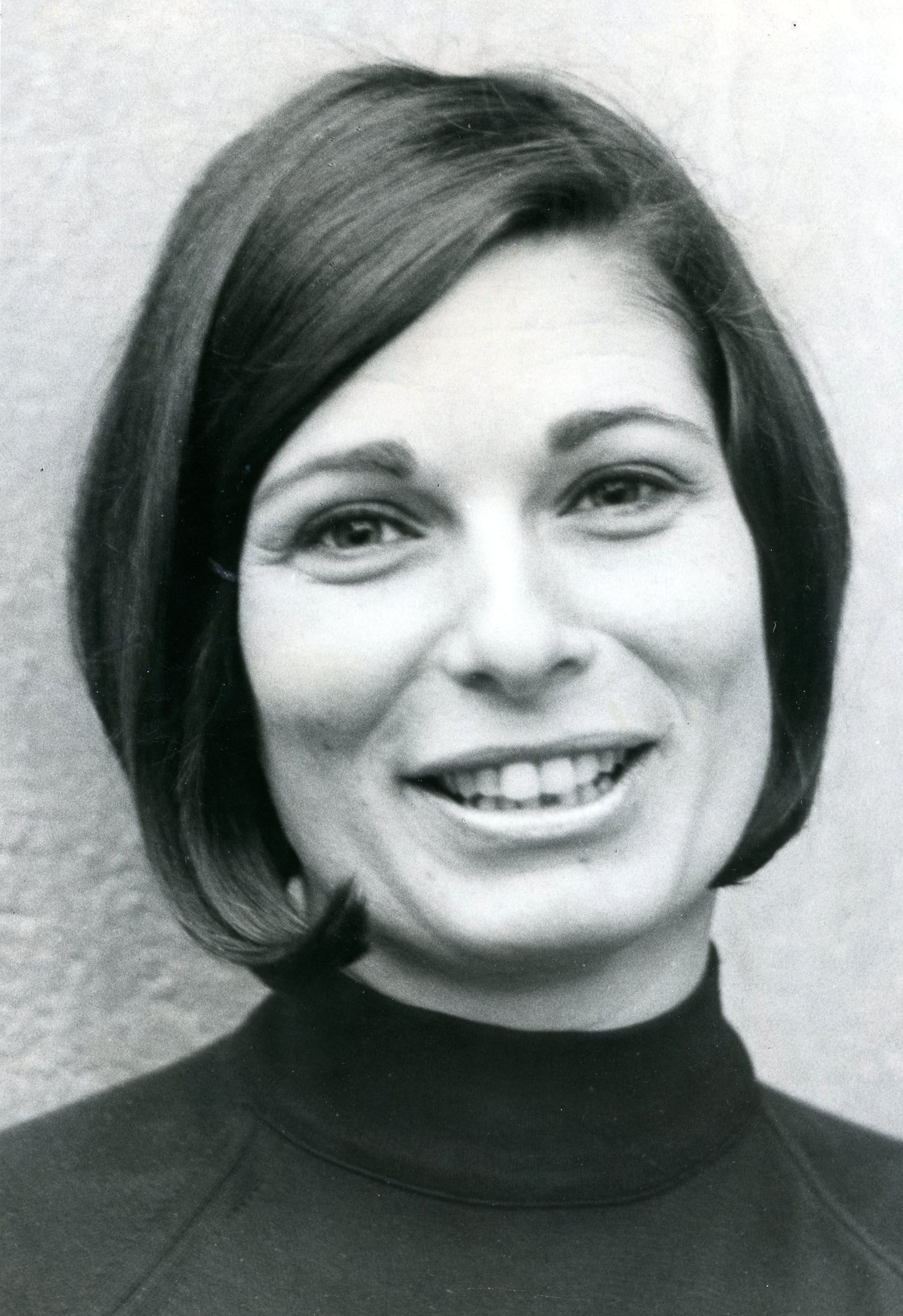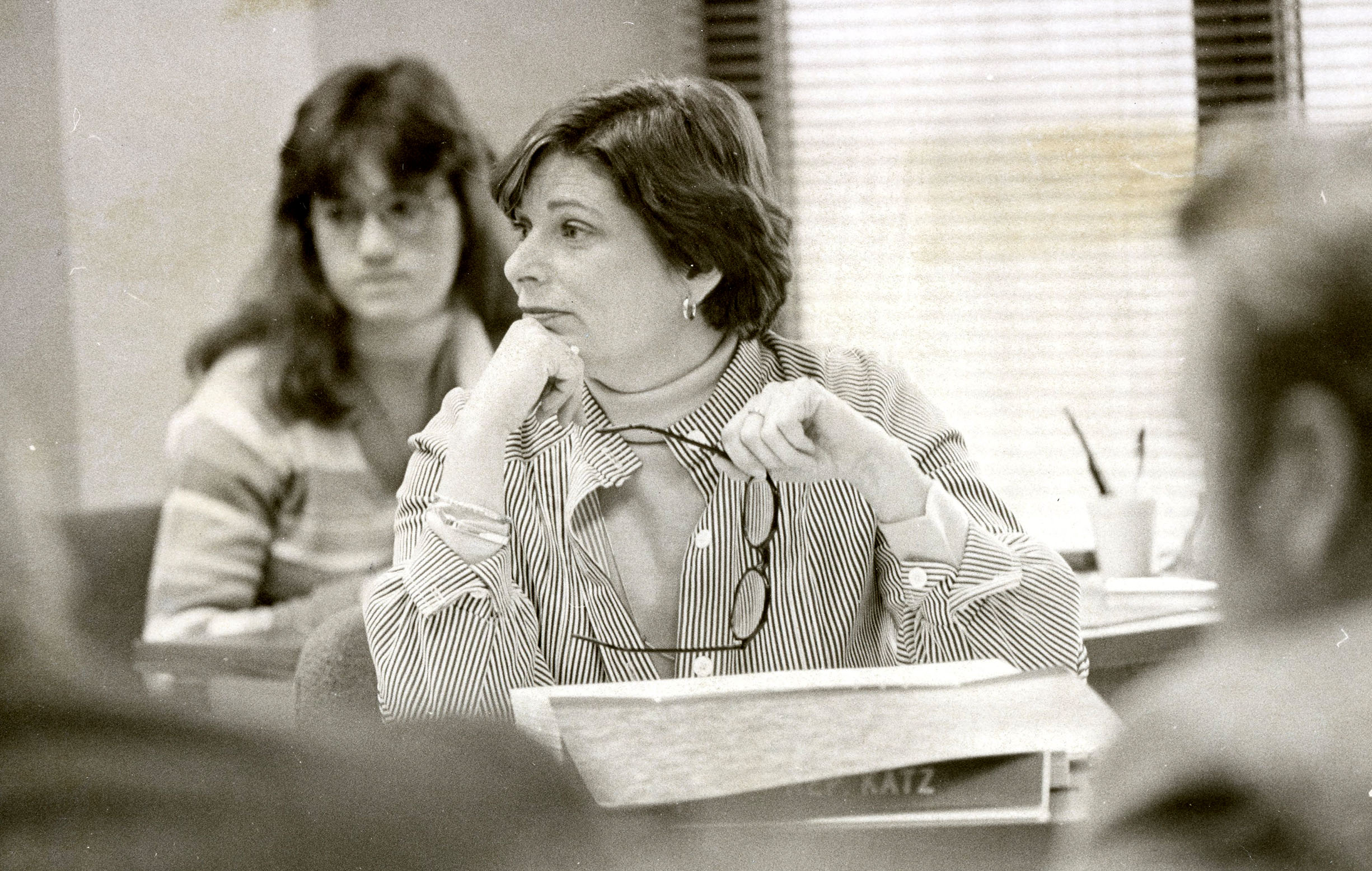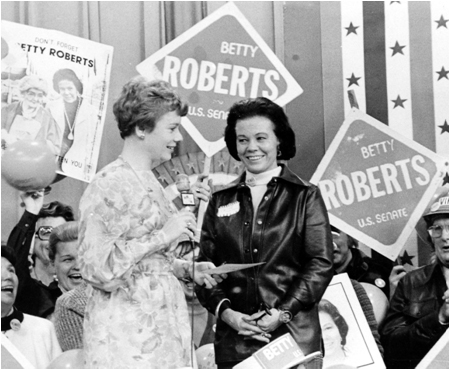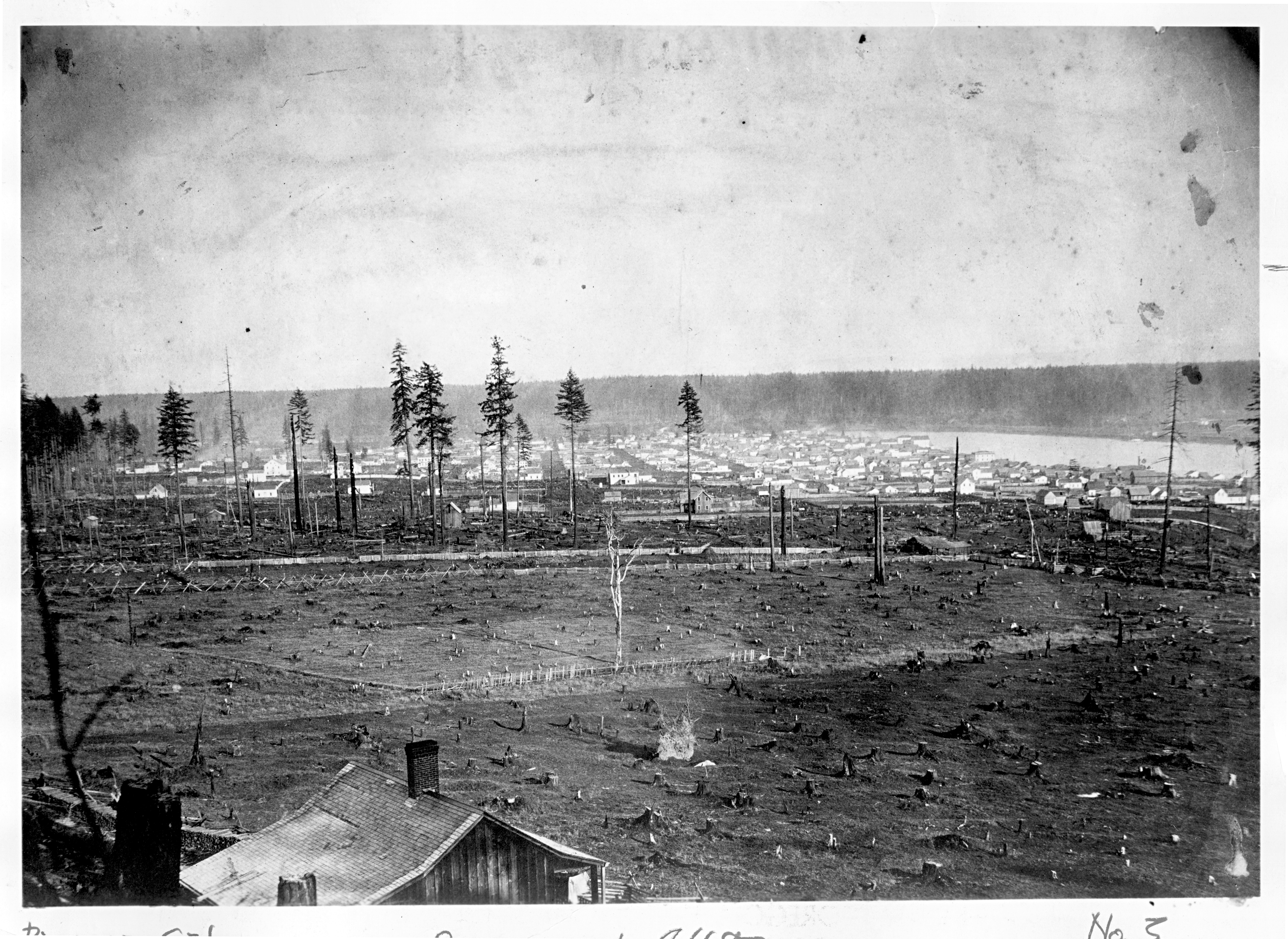Once dubbed a "militant housewife" by the Oregonian, Vera Katz arrived in the United States as a seven-year-old World War II refugee. At the age of thirty-nine, she became a state representative from Portland and, a dozen years later, Oregon's first female Speaker of the House. A three-term mayor of Portland, from 1993 to 2005, Katz reshaped the city skyline by creating a political environment that built the Pearl District, the South Waterfront, and cultural institutions such as Old Town's Lan Su Chinese Garden. She solidified the city's national reputation as a vibrant and quirky bastion of urban progressivism, helping to produce a streetcar, an aerial tram, and a riverside esplanade that now bears her name.
Vera Katz was born Vera Pistrak in Düsseldorf, Germany, on August 3, 1933, the youngest daughter of Jewish Mensheviks who had fled Russia when Vladimir Lenin and rival Bolsheviks seized power. Hitler's subsequent accession in Germany pushed the family—father Lazar, an intellectual and later a specialist on the Soviet Union for the U.S. Information Agency; mother Raissa, who would serve as a Russian translator for Voice of America; elder sister Zena; and Vera, then just two months old—to France. They were forced to flee again in 1940 when Vera was seven, escaping Nazi-occupied France by walking across the Pyrenees to Spain and then boarding a ship in Portugal and sailing to New York City. When she arrived in America, Katz spoke French and Russian but not English.
In the United States, when Vera Pistrak was twelve, her father abandoned the family, leaving Raissa to support their two children by working as a sweatshop seamstress. Vera attended the all-girls Julia Richman High School on the Upper East Side of Manhattan, where, in a 1950 letter to her mother, a teacher described her as the cleverest girl to attend the school since actress Judy Holliday. "She's worth spending any amount of money you can on her education," the teacher wrote.
While still in high school, Vera met Brooklyn-born artist Mel Katz at a camp for New York City laborers and their families in Cold Spring, New York, where she was a junior counselor and he waited tables. She danced at the Martha Graham studio and studied sociology at Brooklyn College, eventually working toward a master's degree in the subject. She would be a lifelong champion of the arts. She and Mel married in 1954 and had a son in 1962. They moved to Portland in 1964 after Mel landed a position as a visiting artist at the Museum Art School. He then taught in the Fine Arts Department at Portland State University.
A stay-at-home mother, Vera Katz felt the pull of politics from Robert F. Kennedy, volunteering for his presidential campaign and forming an Oregon chapter of the Kennedy Action Corps after his assassination in 1968. She boycotted grapes in support of Cesar Chavez, was a ringleader at sit-ins during "gentleman only" lunch service at Perkins Pub, and picketed the City Club of Portland for excluding women. (When the club relented and admitted women in 1973, Katz declined to become a member.)
Katz ran for public office in 1972, pushing out Republican state representative Fritzi Chuinard by a vote of almost two to one after an aggressive door-to-door campaign that took her from Sauvie Island to West Burnside Street. Katz never learned to drive; she walked, took the bus, or rode with her campaign manager Sally Landauer.
As a member of the legislature, Katz stood out as a bold, liberal woman from New York. She championed causes from women's rights and gun control to education reform and LGBTQ issues, including a 1973 bill that sought to prohibit employment discrimination on the basis of sexual orientation. With Norma Paulus, a Republican representative who in 1977 became the first woman to win statewide office in Oregon, and Betty Roberts, a Democratic state senator who would become the first woman on the Oregon Supreme Court, she formed the first Women's Caucus in the Oregon legislature. As her son neared college, Katz separated from her husband, officially divorcing in 1985.
In November 1984, legislators elected Katz Speaker of the House after an all-night session of balloting, during which no one was allowed to leave the voting room. Her allies did not want male legislators retreating to the bathroom, fearing they would cut deals that excluded the women. When Katz took the gavel at the start of the 1985 legislative session, she was the first woman Speaker in Oregon history and only the second female Speaker in the United States (the first was in North Dakota). "The last thing those boys wanted,” she told the Oregon State Capitol Foundation Oral History Project, “was to have a woman speaker, a speaker like me."
As Speaker, Katz partnered with Senate President John Kitzhaber to reform taxes, health care, and public schools. In 1991, Kitz and Katz, as they were known, overcame teachers' objections to pass the Oregon Educational Act for the 21st Century, a bill that expanded early childhood education and set new academic standards for high school students. The bill was controversial and never fully implemented, and Oregon lawmakers eventually dissolved its structure.
In 1992, Katz bested Earl Blumenauer, a city commissioner, to become mayor of Portland, its third-ever female leader. At Portland City Hall, she promoted a vision of a walkable, progressive city that embraced the arts, combated gang violence, and aided children, working with school districts to plug budget holes even though K-12 education was not under the city's domain.
Katz was Portland's chief cheerleader. In 1996, when Willamette floodwaters threatened to overwhelm downtown, she called on volunteers to build a makeshift barrier from plywood and sandbags along Tom McCall Waterfront Park. The community dubbed it Vera's Wall, and President Bill Clinton, who visited Portland and hailed its leader, called it "a symbol of what our country does when everyone pulls together."
Nonetheless, Katz's popularity softened in her second term, and in 2000 a nineteen-year-old outsider candidate named Jake Oken-Berg, who snagged the endorsement of former mayor Bud Clark, nearly forced her into an election runoff. She prevailed, with a little over 50 percent of the vote to his 24 percent, in a field of fifteen additional candidates, winning a third term while battling breast cancer.
In the aftermath of 9/11, Katz again rallied worried Portlanders. She conquered her fear of flying to join a delegation of Portlanders who visited New York City when trips to Manhattan still felt dangerous. The group marched in the Columbus Day parade and thanked first responders personally. In her last term, she faced a second, more serious bout of cancer, but she continued her rigorous work schedule while undergoing chemotherapy and other arduous treatments.
After leaving the mayor’s office, Katz held an honorary position at Portland State University and worked as a consultant for Gallatin Public Affairs. The cancer treatment had weakened her kidneys, forcing her to undergo dialysis. She died on December 11, 2017, from leukemia and kidney failure.
Katz believed strongly that women governed uniquely. Her own power, she said, derived from her willingness to include others. "I think more women need to get involved," she said in a 2012 interview. "They view the issues differently. I hate to admit it, but we do. There is a lot more empathy, a lot more understanding of how all the dots connect." Four years after her death and almost fifty years after her first election, female legislators held a majority of seats in the Oregon House for the first time in history.
-
![]()
Vera Katz, 1974.
Oregon Historical Society Research Library, Journal, pf 597
-
![]()
Vera Katz, 1981.
Oregon Historical Society Research Library, Journal, pf 597
-
![]()
Vera Katz.
Oregon Historical Society Research Library, Journal. bb014594, pf 597
-
![]()
Vera Katz, 1980.
Oregon Historical Society Research Library, Journal, pf597
Related Entries
-
![Betty Roberts (1923-2011)]()
Betty Roberts (1923-2011)
Betty Roberts was a thirty-two-year-old housewife with four children wh…
-
![City Club of Portland]()
City Club of Portland
City Club of Portland is Oregon’s largest civic affairs group. It is a …
-
![Norma Petersen Paulus (1933-2019)]()
Norma Petersen Paulus (1933-2019)
Norma Paulus was a forward-thinking, practical-minded Republican leader…
-
![Portland]()
Portland
Portland, with a 2020 population of 652,503 within its city limits and …
Map This on the Oregon History WayFinder
The Oregon History Wayfinder is an interactive map that identifies significant places, people, and events in Oregon history.
Further Reading
Katz, Jesse. The Opposite Field: A Memoir. New York City: Crown Publishing, 2010.








